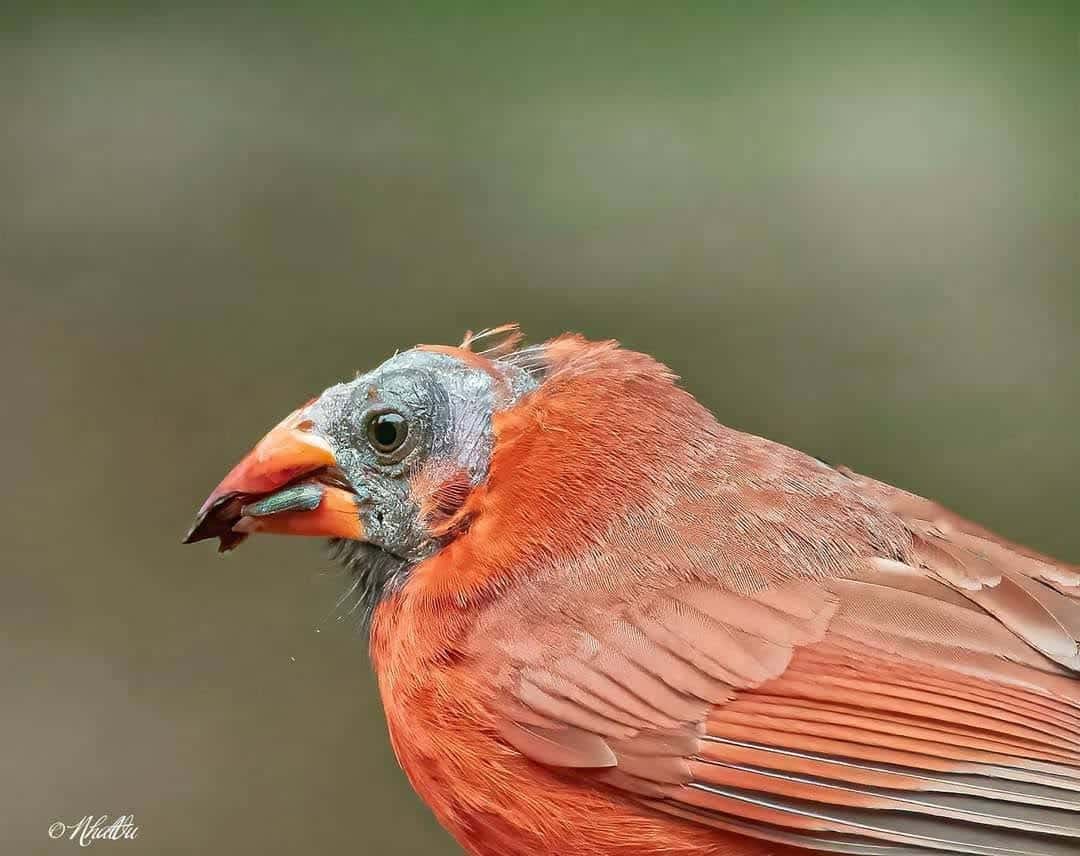Have you heard of cardinals without crests and wondered what caused it? The bird’s crown standing tall is its signature trademark. Take that away and what you have left is one disturbing-looking bird.
It turns out cardinals without crests are not that uncommon. Missing head feathers could be a result of many different things from the natural process of molting all the way to a case of mistaken identity.
In this article, I’ll share 6 common reasons a northern cardinal is missing its crest or is sporting a bald head. One or more of them is likely the culprit for transforming our feathered friends into freaky-looking birds. Here they are:
- An overzealous molt
- Parasite infestationqe
- Juvenile cardinal
- Deliberate
- Mistaken identity
I’ve been backyard birding for more than 25 years and I’ve seen hundreds of cardinals but only a few that were missing their head feathers. The last time it happened, I decided it was time to dig into the research and find out why.
5 Common Reasons for Cardinals without crests
Regardless of the cause, both male and female cardinals can be victims of a featherless crown. Let’s take a deeper dive into these likely reasons.
1. An overzealous molt
The bird may be missing its crest due to an overzealous molt. More specifically, an overzealous molt!
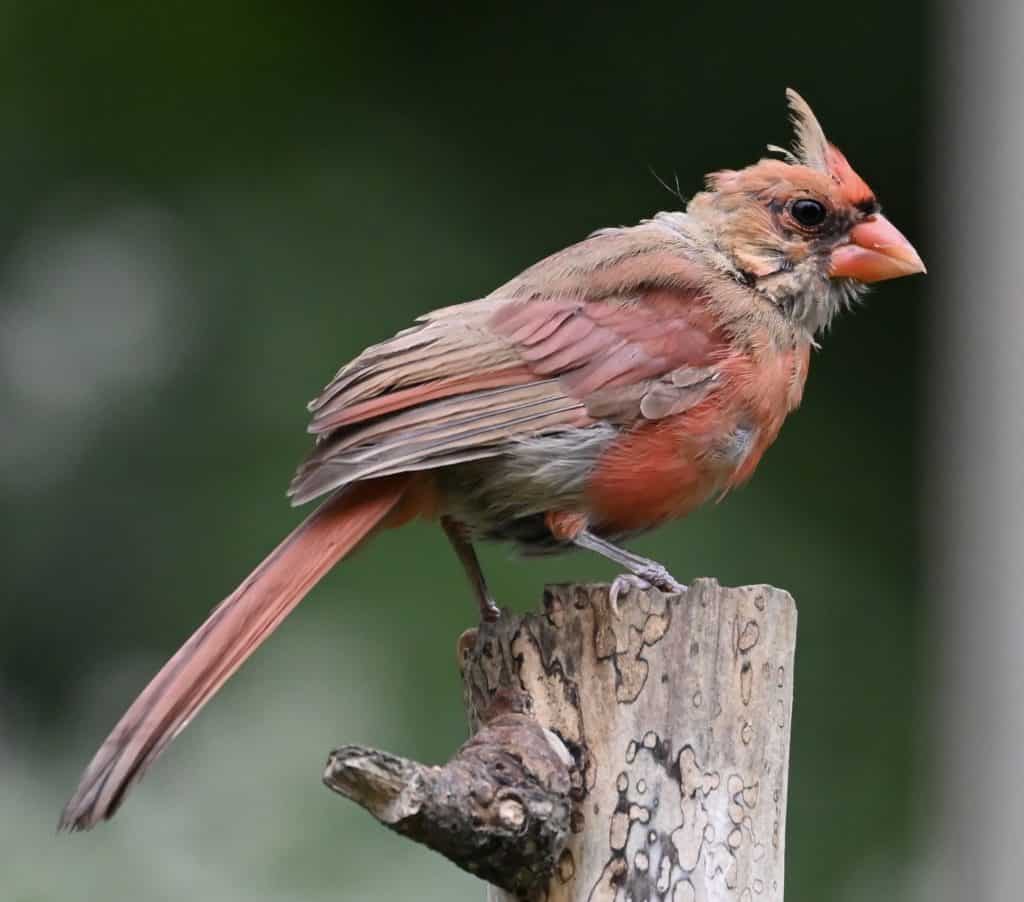
Molting is a process of shedding feathers and is normal. Cardinals normally molt one time a year in late summer/early fall.
When they’re ready to be shed, they become brittle and dry – a sign that they are reaching their expiration point. As the feather tract invites new plumage to come in, they will gradually replace the old ones. Eventually, all of the new ones will be grown in – a process that typically takes place over a period of several weeks.
The replacement rate of the old plumage varies depending on species but generally progresses from the head downwards.
However, when the bird experiences irregular feather loss (e.g. ALL of the head feathers fall out at once), we’ve got an overzealous molt. It’s not normal.
Staggered feather replacement is the normal pattern so the bird can still perform normal feather-related activities like flying, protecting the skin, and maintaining body temperature. The video below, captured on my Netvue Birdfy Smart Bird Feeder, reflects a normal molt.
Most wild birds molt but people don’t notice. It’s the molting northern cardinal that causes a double-take!
This is likely because of the unexpected display of black skin, in the case of the bald-headed cardinal, as well as its signature crest noticeably missing.
While both male and female cardinals molt, it’s especially noticeable for the male and his bright red-colored plumage.
2. Parasite infestation
Cardinals without crests may be due to a parasite infestation
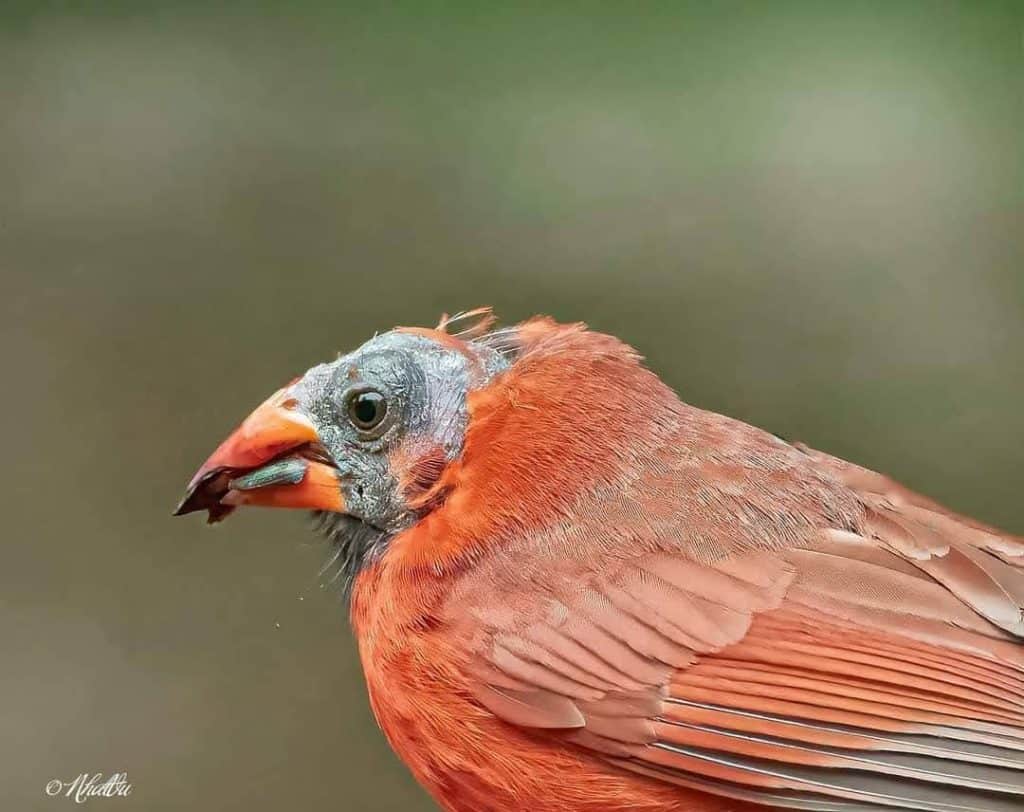
The bird missing its crest might be experiencing a severe mite infestation (also known as “avian skin mites” or “feather mites”) or lice. Mites and lice are common parasites of wild birds.
Feather Mites
The bird loses its crest due to these mites living on the skin on the top of the head.
Feather mites (Haemosporidian Parasites) are organisms that hop on the cardinal and dine for free (also known as freeloaders). The feathers become damaged as a result – to a point where they’re no longer usable. In the end, they fall out.
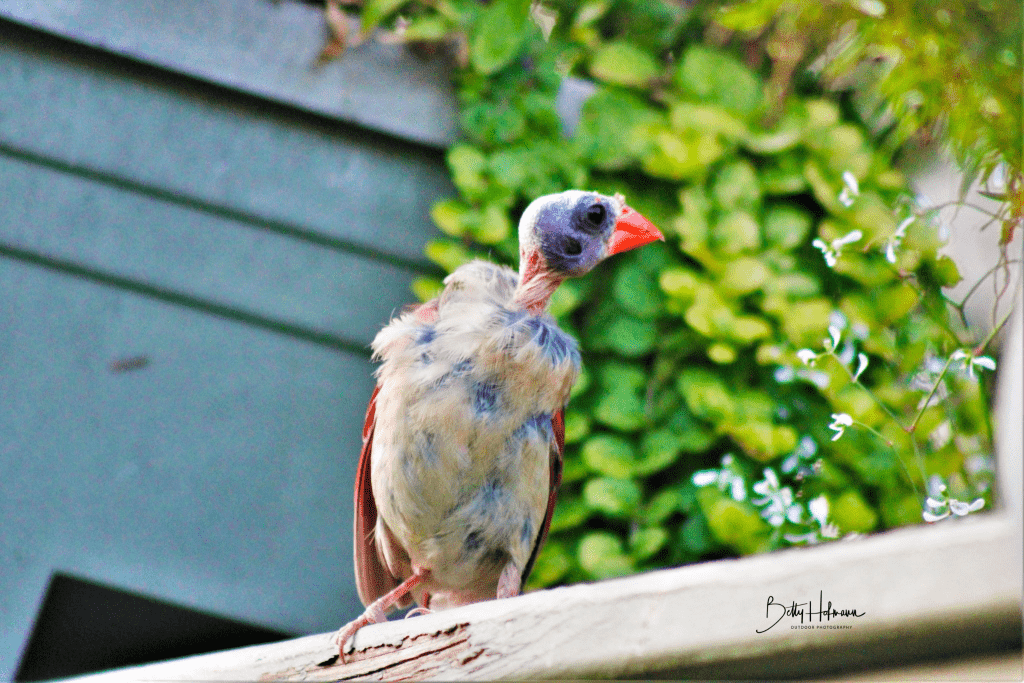
They can cause the bird to go bald or have patches of feathers missing throughout its body.
The good news is – they usually grow back!
Lice
Lice also inhabit cardinals but typically live on different parts of their anatomy. They generally attach themselves to feathers and feed by sucking blood from the skin beneath them.
Lice on the body, wings, and tail are relatively easy for the bird to remove. They just crank their head around and remove them with their beaks.
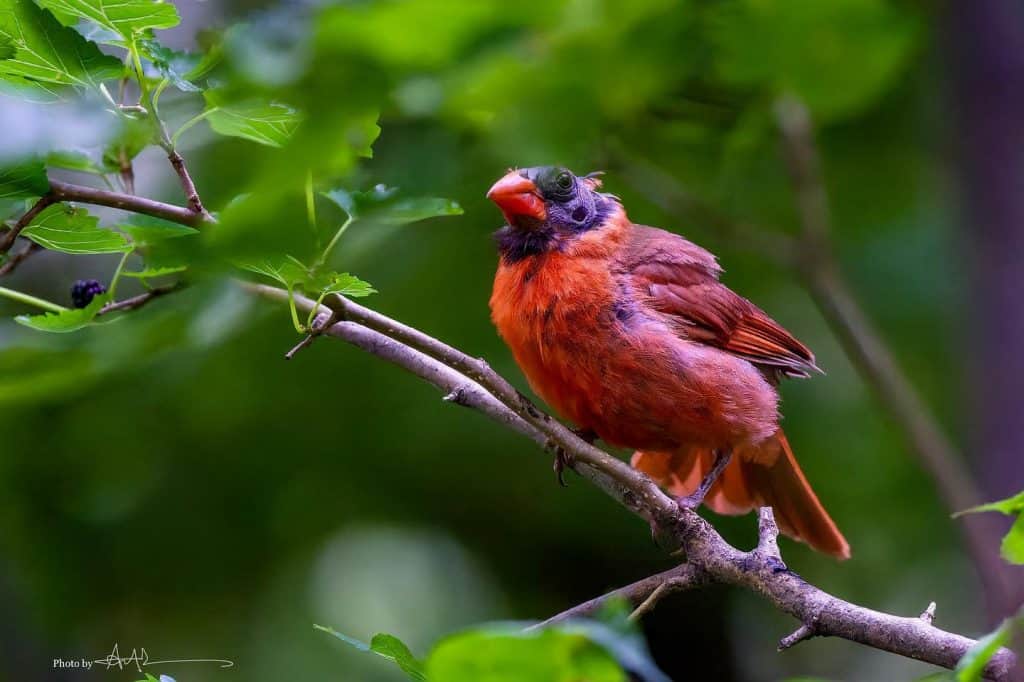
Now imagine lice on the bird’s crown feathers. It’s not so easy to reach the top of their head with their beaks! So, in some cases, the lice will win, the feathers grow weak, and fall eventually out.
While this feather disease (parasites) is fatal to baby cardinals in the nest, adults usually recover and feather growth returns to normal.
3. Juvenile
The bird may be missing its crest because it’s too young! It’d be like a toddler sporting a beard.
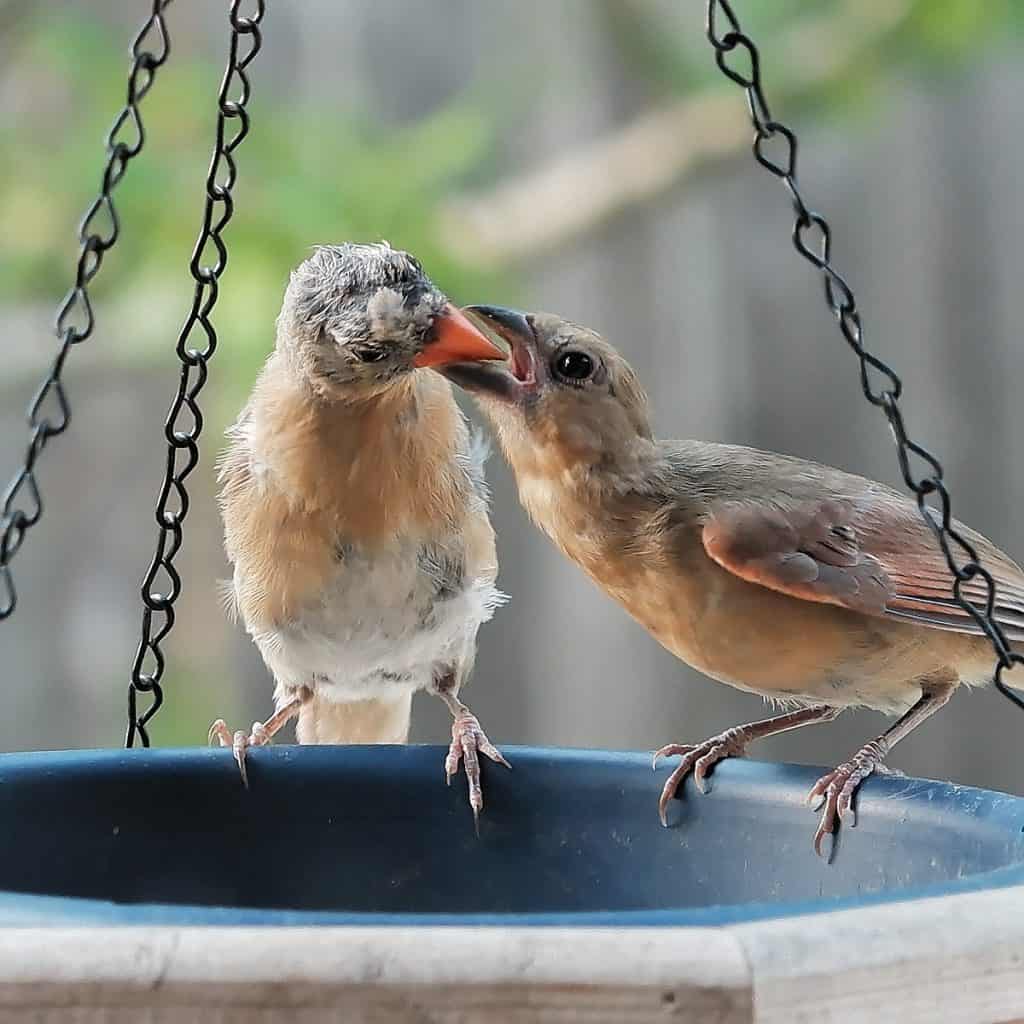
Young, immature cardinals don’t grow their crest until their months old. If they have a crest, it’s probably pin feathers, very sparse, and lays flat.
Juvenile cardinals look a lot like adult female cardinals without a crest.
Both male and female juveniles are buffy-tan in color throughout the body with streaks of orange, subtle red highlights on the crown and tail, and a brown or black color beak.
How can you tell if it’s a juvenile or adult missing its crest?
- Juveniles appear fluffier than adults because they haven’t grown all of the plumage yet.
- Juveniles have brown or black beaks. As they get older, it slowly transitions to orange.
4. Deliberate
Not to insult your intelligence, but cardinals without crests could be a normal bird deliberately flattening its crown.
Much of the time the cardinal’s crown stands tall and full, but the bird is also capable of lowering and flattening the crown or raising the crown higher when needed.
Below are a few examples of when cardinals will intentionally lower or raise their crest:
- Cardinals will flatten their crest when they’re at ease or relaxing (e.g. at the nest incubating eggs or feeding their young)
- When male cardinals are trying to impress a potential partner, they’ll raise and lower their crests.
- Female cardinals will lower their crests when engaging with a male she’s interested in, such as during courtship feeding.
- Male cardinals will flatten their crest when chasing away an aggressor (e.g. a rival bird is encroaching on their territory or mate).
- Male cardinals will lower their crest as a sign of submission, such as when they’re losing a battle.
5. Mistaken identity
Cardinals without crests may be a case of mistaken identity! In other words, it’s a different species than the northern cardinal. Newby birders make this common error all the time.
You think you’re looking at a cardinal without a crest but it’s actually a look-alike bird. Several birds look like cardinals but lack the signature crest.
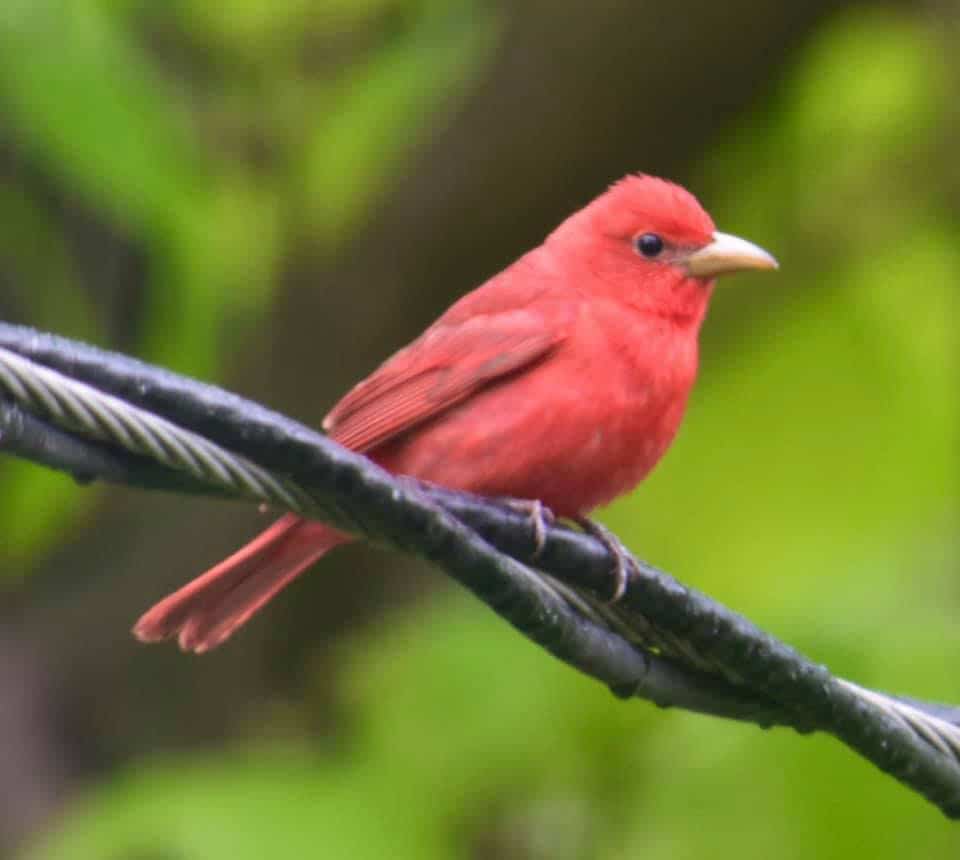
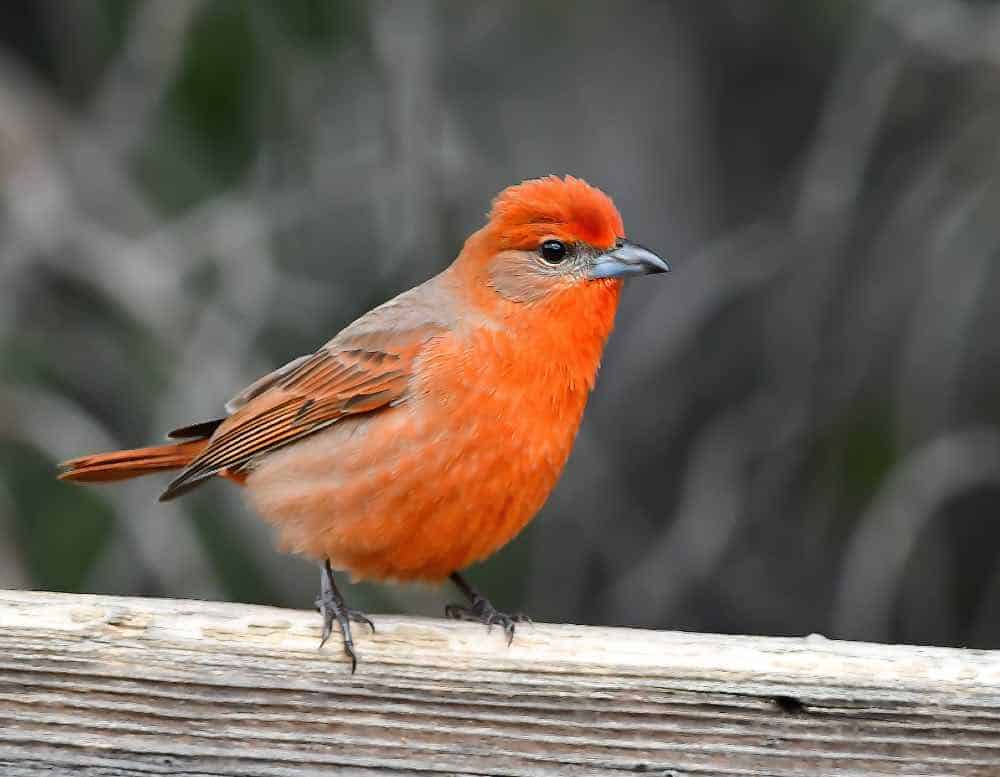
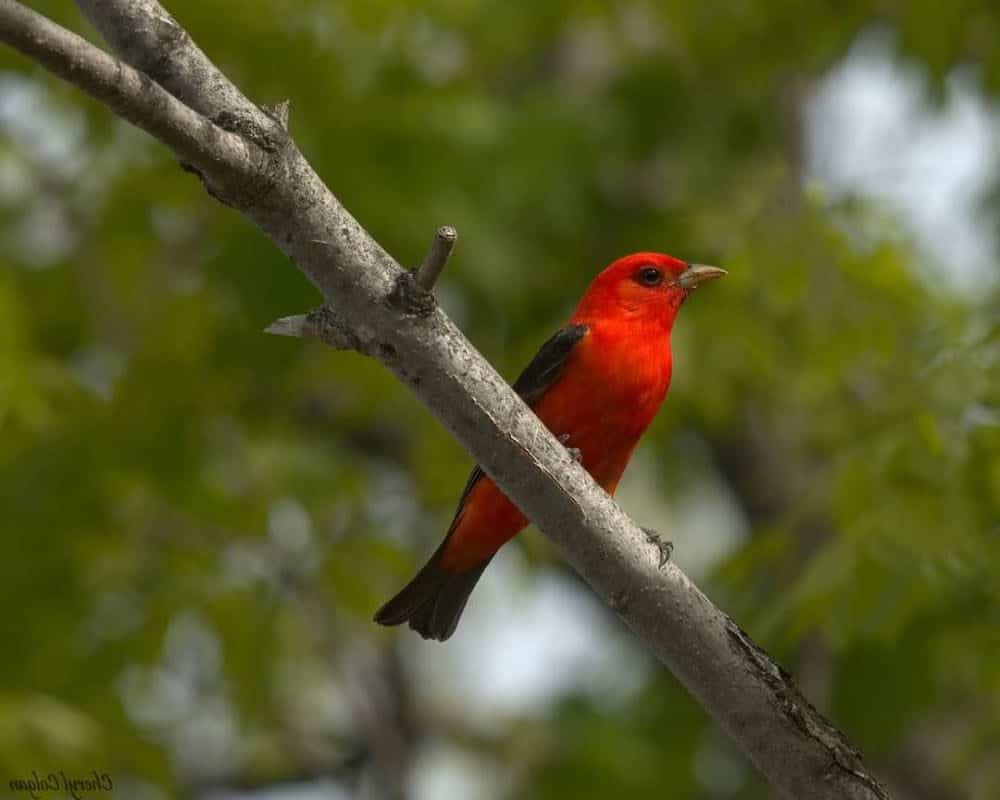
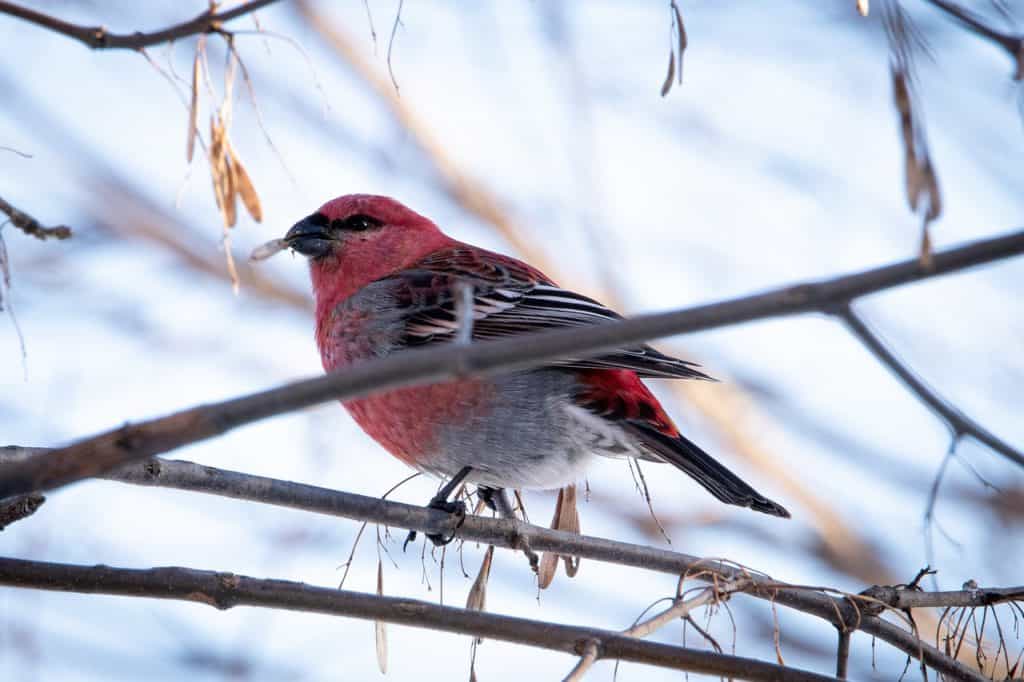
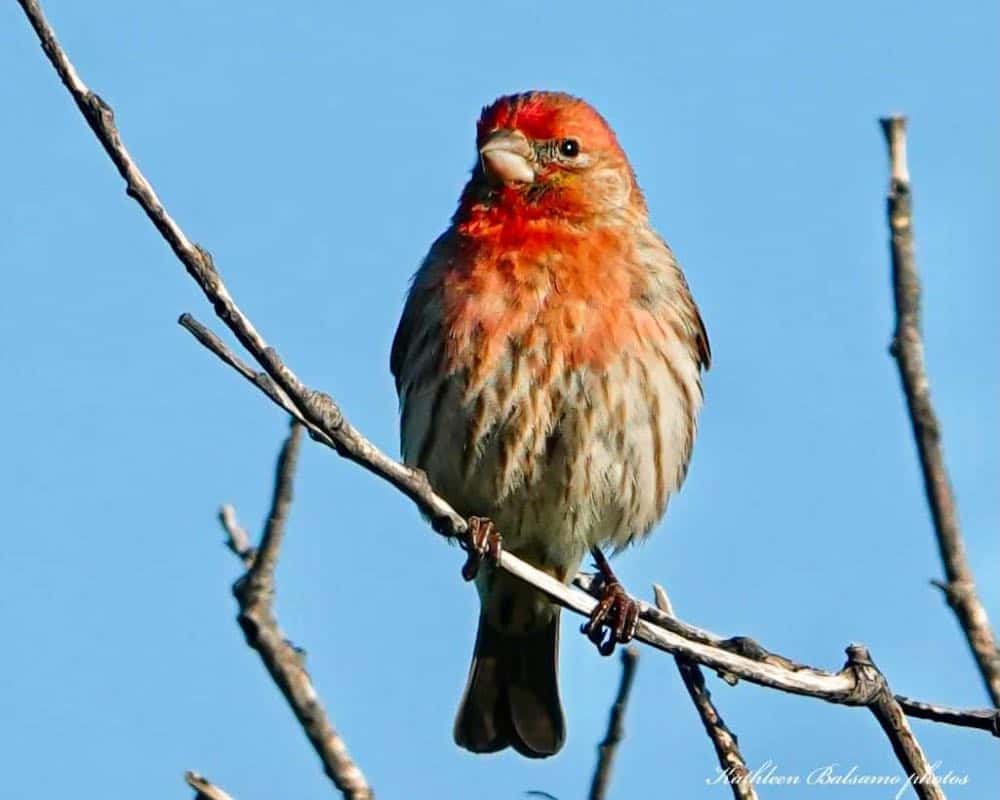
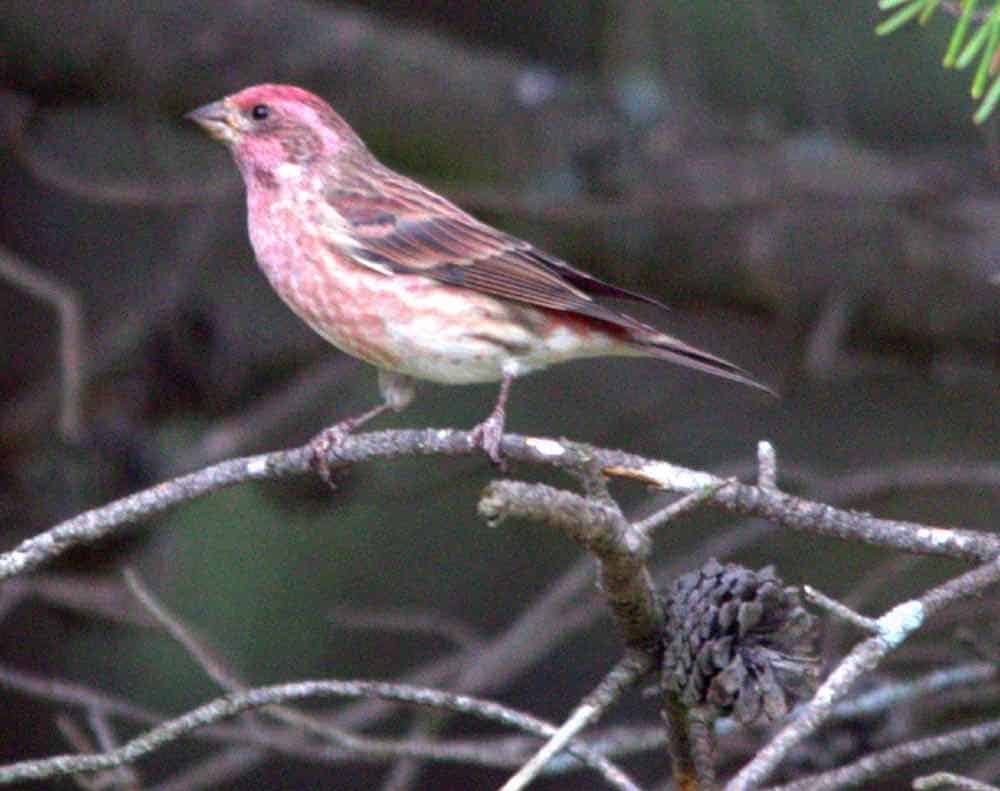
Here are the most common birds mistaken for a red male cardinal without a crown:
- Summer Tanager
- Hepatic Tanager
- Scarlet Tanager
- Pine Grosbeak
- House finch
- Purple finch
What about female cardinals?
The most common species mistaken for a female cardinal without her crest is the California towhee. Both birds have buffy-brown color – but the towhee doesn’t have a crest.
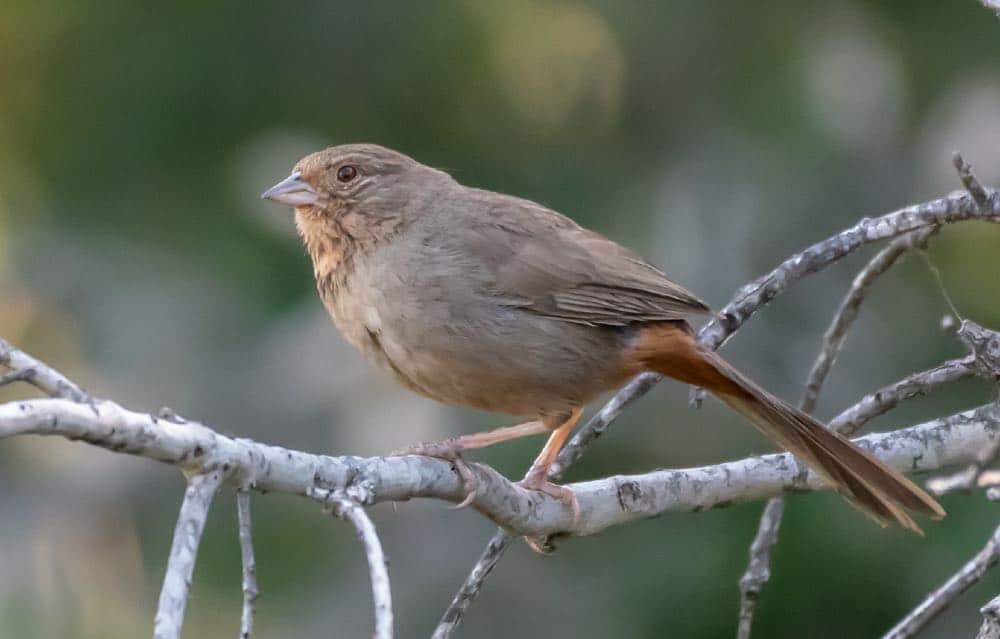
There are more differences between the above imposters than just the absence of a crown. Check out 9 Birds That Look Like Cardinals But Aren’t for more details.
Conclusion
Northern cardinals without their crests are like superheroes without capes. It just looks weird.
There are five common causes for the bird’s appearance including abnormal molting, a parasite infestation, it’s a juvenile cardinal, the bird just lowered its crown, and it’s not a cardinal at all!
In the case of molting or parasite infestation, don’t worry. The bird will likely recover and grow its plumage back. There’s nothing for you to do.
If it’s a juvenile or just a different species, there’s nothing for you to do other than enjoy observing them.
If you’re worried the bird has a severe condition, immediately contact a local wildlife rehabilitator who specializes in birds. I use Wildlife Help Near Me.
Happy Birding!
Sources
The Cornell Lab of Ornithology – All About Birds
FeederWatch
NestWatch
Massachusettes Audubon
Birds & Blooms

